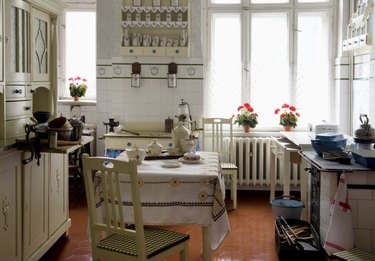
Builders in the 1930s didn't have all the same flooring alternatives as modern builders, but they didn't have a shortage of options, either. Vinyl didn't become a viable choice for homeowners until the 1950s, and laminates didn't come along until the 1970s. But in lieu of these modern materials, 1930s homeowners laying kitchen flooring had a choice of several types of sheet flooring and floor tiles. Like their modern counterparts, they could also choose ceramic tiles and hardwood.
Resilient Flooring
Video of the Day
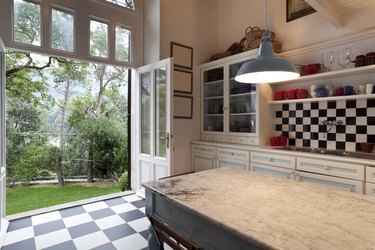
Resilient flooring was so named because it has a spongy backing and gave a little spring to the step. Linoleum was the first of this type to be developed, but by the 1930s, manufacturers were offering asphalt-saturated felt flooring, which was a less expensive and not quite as durable variant. A common brand name was Congoleum, which got its name from the Belgian Congo -- the country, now named Democratic Republic of the Congo, that produced the asphalt. Some manufacturers offered a linoleum imitation made by grinding and pressing cork into a mold and baking it. This type of flooring usually came as sheets and tiles, and it was valued especially for the insulation it provided. After its introduction in the 1950s, vinyl largely replaced these materials, but linoleum is making a comeback.
Video of the Day
Asphalt and Rubber Tiles
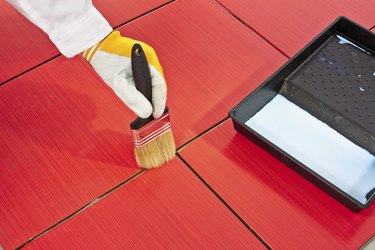
Asphalt tiles were harder than resilient flooring, and they began to surpass it in popularity during the 1930s. The 12-inch-square tiles were manufactured with asbestos, which was included as a mineral filler. They were typically black, gray or white, and had irregular streaks of contrasting colors. People used them to cover basement and utility room floors, and because they were water-resistant and inexpensive, sometimes the kitchen floor. Rubber flooring tiles, which became available in the late 19th century, resembled asphalt, but were softer and less resistant to solvents. Like asphalt tiles, rubber tiles often contained asbestos. Because asbestos is a respiratory hazard, neither type of tile is available any longer.
Geometric Ceramic Tiles
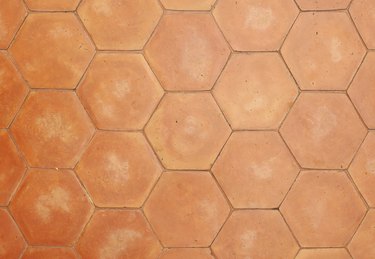
As they are today, ceramic tiles were a common flooring choice in 1930s kitchens, but the tiles were typically small and arranged to create a mosaic pattern. Starting in the 1920s, manufacturers pasted these tiles onto 12-inch-square paper backing to make them easier to lay; by the 1930s, they were pasting them to fabric mesh instead. The individual tiles were sometimes square, but they could also be triangular, rectangular or hexagonal. These types of tiles are still available, but modern builders use them more often in bathrooms than they do in kitchens.
Hardwood Flooring
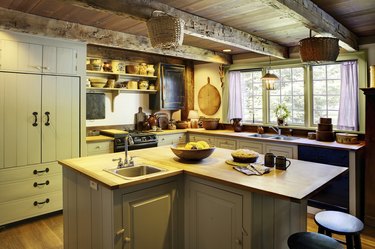
Hardwood was more abundant and less expensive in the early part of the 20th century than it is today, and it wasn't unusual to find hardwood flooring in every room in the house, including the kitchen. Kitchen floorboards were often narrower than those in the rest of the home; they were 2 inches wide, while those in the living room and bedrooms were 3 1/4 or 4 inches wide. There were no engineered flooring boards in the 1930s; all the boards were solid wood, and they were often quarter-sawn, which gave them a richer grain pattern and more durability than modern flat-sawn boards.